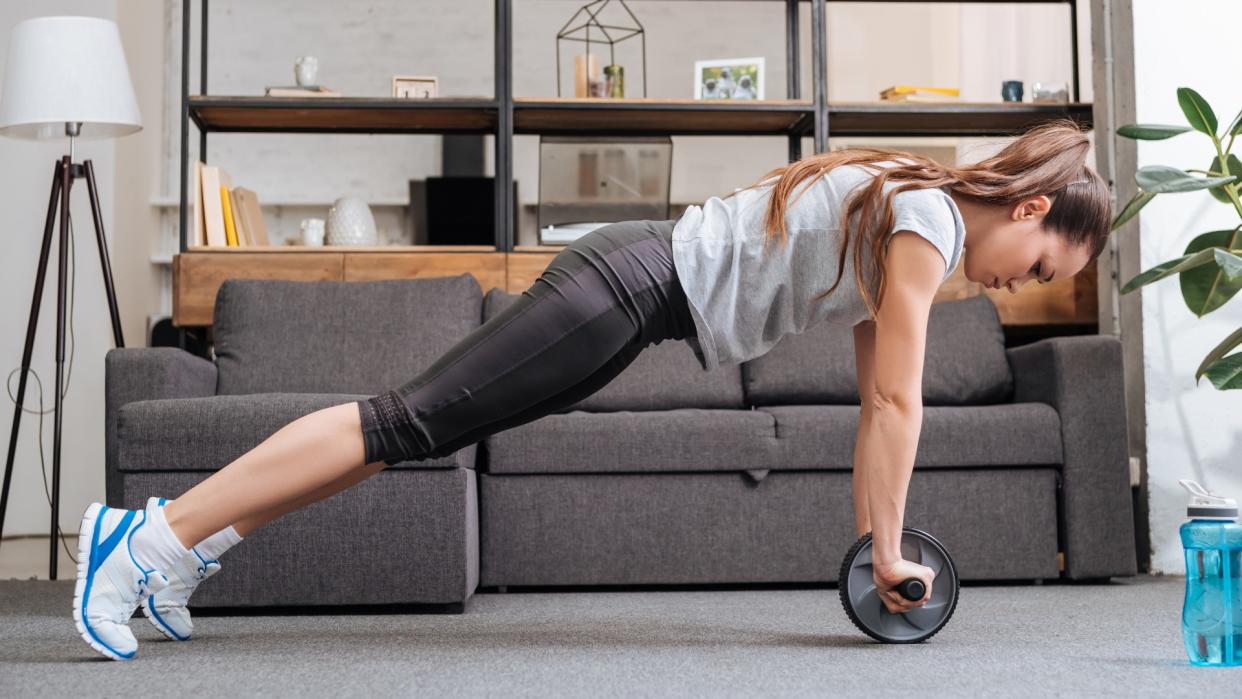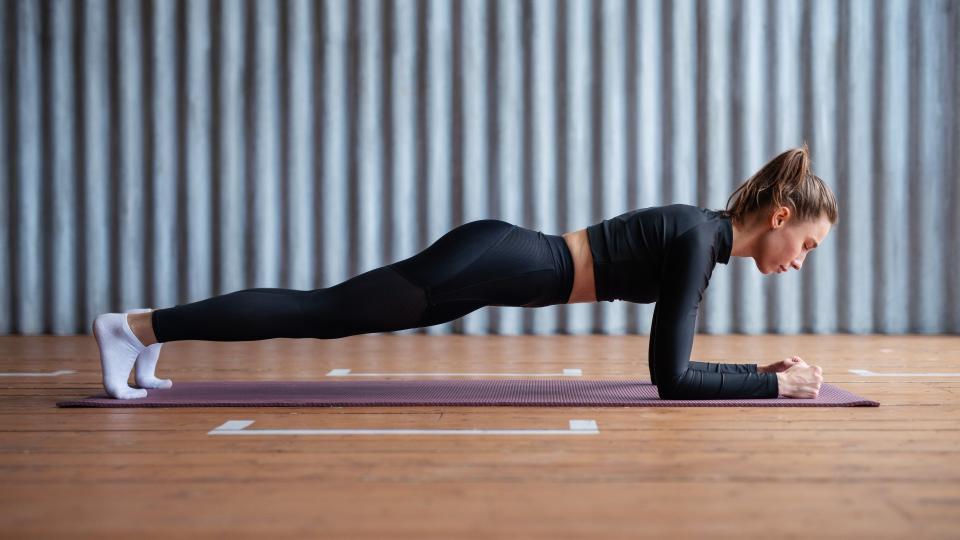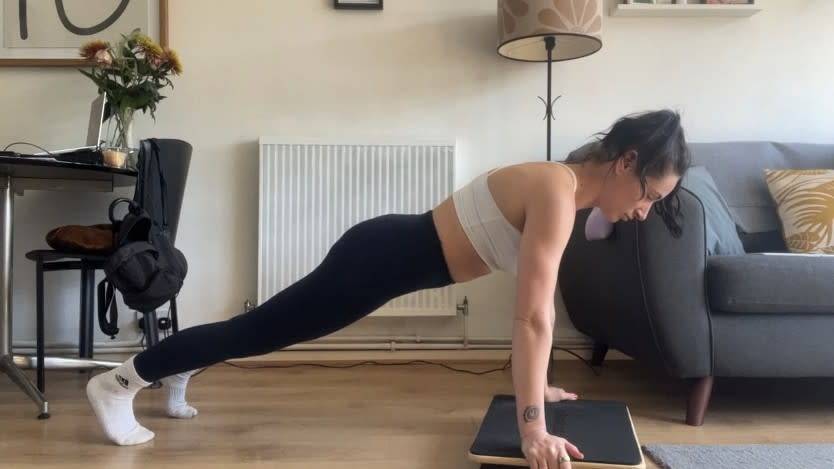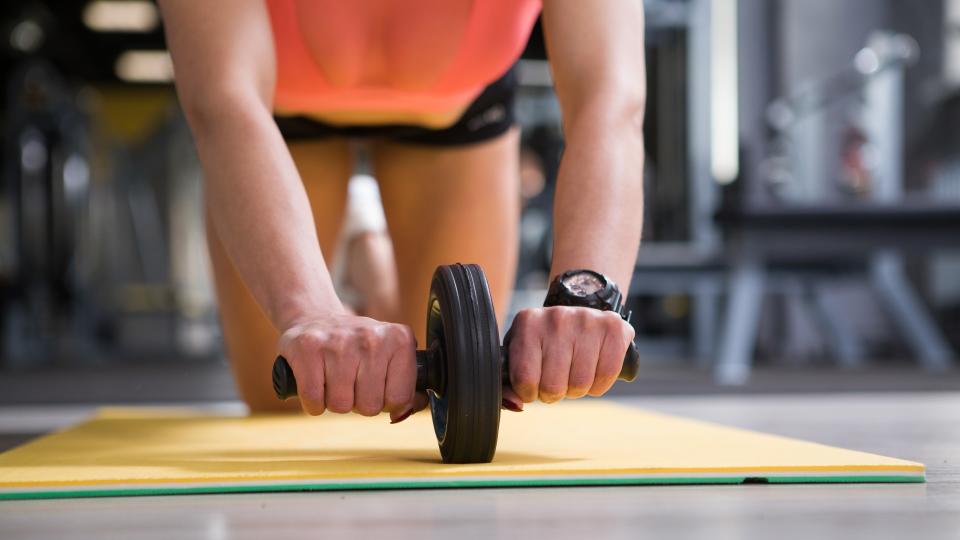How to do the ab wheel plank — and the benefits for building your core

Why not use an ab wheel to work muscles harder during planks? It's a good way to change things up and the variation challenges balance and stability, activating muscle groups all over the body.
Switching up the traditional plank can benefit the mind and body, keeping your muscles guessing and mind stimulated while learning a new move. And some are harder to nail down than others. Trust us — this one is killer on the abs. Before we dive into how to do ab wheel planks and the benefits, here’s a round-up of the best plank variations for you to try — tested, and reviewed by us.
But enough about that. Build core strength and stability and develop muscle using the ab wheel rollout. Here’s how to do it and why you should.
Ab wheel planks: Benefits
Planks build core strength, but they also strengthen muscles in your shoulders, arms, chest, lower back, glutes, hamstrings, hip flexors and quads. A strong core supports good posture and muscle coordination and improves your potential for lifting heavier in the gym, translating to other areas of exercise and sport.
That’s because this complex network of muscles (superficial and deeper) helps your torso rotate, flex, extend, mobilize and stabilize.
Regardless of your workout style, you may notice planks creeping into all sorts of workouts, from metabolic conditioning to Pilates, using isometric contraction (that means without movement) to activate and strengthen muscle groups. You can learn all about planks here.

Now, take that plank and remove the stability of the ground beneath you. Hello, ab wheel plank! This variation is far harder because your muscles are battling against the instability of a thin wheel with two handles stuck on either side. It takes more balance, skill and strength to prevent the wheel from moving, and it torches shoulder muscles.
How to do ab wheel planks
Traditionally, ab wheels cater for ab wheel rollouts, but not this time.
How:
Place your ab wheel in front of you on your mat and grip the handles with both hands
Extend your arms and stack shoulders over your wrists
Engage your stomach, then step one foot back at a time into a high plank position
Keep your hips in line with your shoulders and squeeze as many muscles as possible as you gently suck your belly button toward your spine. Hold the position without the ab wheel moving
Once comfortable with the exercise, progress by gently wheeling the ab wheel forward and back with control (see above).
Ab wheel planks: Common mistakes
Here are some common mistakes we notice.
Shoulder placement
Shoulders should be stacked over your wrists, forming a straight line. Doing so will help you balance and protect your joints. Placing weight too far behind the shoulder or further forward will create strain and increase your chances of injury.
Hip too high or low
Another common mistake is positioning hips too high or low in the plank position. You should be able to draw a straight line from head to toe without your bum creeping toward the ceiling or your hips dropping toward the floor, which creates pressure on the lower back. Engage your core by bracing your stomach and squeezing your glutes while you hold your plank.
Forgetting to breathe
Diaphragmatic breathing is an expansive breathing technique often taught in yoga or Pilates but less so in broader fitness. We know that you should exhale as you meet the most resistance during the concentric phase of an exercise (like pushing up during a push-up), but what about the plank? Direct your breath toward your stomach rather than the restrictive part of your chest; this will control your breath and prevent dizziness.
Ab wheel planks: Variations and modifications
If you’re not quite there yet, fear not. These two variations still offer up plenty of fire.
Balance board planks

We discuss how beneficial balance boards are for elevating your plank gains here in our Plankpad review. The wider surface area is easier for people learning how to plank on a balance board while still challenging stability to prevent the board from wobbling in all directions. Once you feel comfortable with your form using one, practice with an ab wheel instead.
Knee planks

The knee plank is just a regular plank with your knees down on an exercise mat. It helps build foundational strength and increase endurance without putting as much pressure on your joints. We use this alternative for people returning from injury or beginners using planks for the first time. Try placing your knees down during an ab wheel plank as a bridging exercise between traditional versions and a full ab wheel plank.

